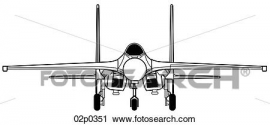With the F-14, it's notable and known that the F-14's maximum speed is exactly the same whether you're running the TF30 or the F110; i.e, it's inlet limited with regards to speed.
As for the J-20 vs the Su-27, I apologize I haven't taken the time to go measure the inlets again as I said I would, but I'll get to it by the weekend. However, just purely eyeballing it:
View attachment 73906
Contrary to your assertion, the J-20's inlets are of equal or larger size than the Su-27's when you ignore the DSI. This is considering that the J-20 has approximately a 12.95m wingspan, and that the Su-27 wingspan is 14.7m, or is about 14% greater.
As for the WS-15 vs the WS-10 in terms of mass air flow requirements, it's known that mass air flow requirements are dependent on fan diameter. Knowing that Chinese engine design is behind that of the Americans, we should expect lower maximum temperatures and thus a greater fan diameter to produce the same amount of thrust. While fan diameters for the WS-10 are not available, the rumored fan diameter for the WS-15 is 1 meter, while the Al-31 to Al-41 fan diameter varies from 900mm to 930mm. That's a 16-23% diameter difference. The comparable American engine (F135) incidentally has a fan diameter of around 1.16 meters, which implies that either:
-The WS-15 operates at higher temperature, which implies that the Chinese have passed the Americans in terms of engine metallurgy, or that the Chinese are willing to put up with a lower engine life.
-The WS-15 is going to be significantly more thrust-limited when compared to the F135.
-The WS-15's stated fan diameter is wrong, implying that mass air flow requirements for the WS-15 are even higher than previously expected.
Also, as a preliminary, I get around 0.87m^2 for a single J-20 inlet, using the picture above as an example (650 pixels = 12.95 meters, inlet is 48 pixels wide, 68 pixels tall, assuming it's a parallelogram, then you remove the triangle where the inlet slopes down, and then highlighting the exposed DSI and halving the area, you get about 0.87m^2).


